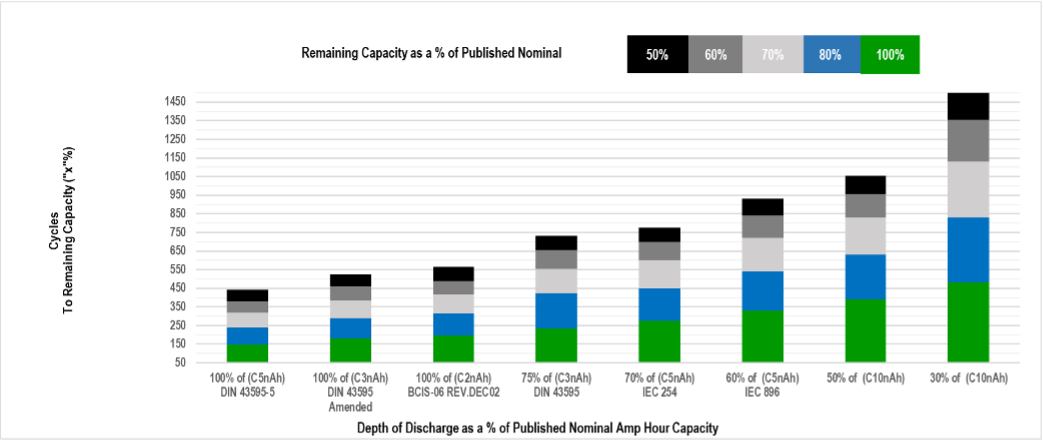
How can I tell if my deep cycle battery has reached the end of its useful life?
Determining if a battery has reached the end of its useful life can be a difficult task. Depending upon what test standard you wish to use or what application the battery is being used in, there are several answers to this question.
There are as many industry test standards as different types of batteries and applications.
No matter what test standard is used, if the battery no longer provides the level of service you need to do the job it was initially purchased to do, then as far as your application is concerned, the battery is at the end of its useful life.
That does not mean the battery is at the end of its useful life according to the manufacturer or the industry engineering standard.

Figure 6 – Cycle Life Testing Standards at various Rates and to various remaining capacities
According to BCI Standard BCIS-06, a deep-cycle battery would be considered to be at the end of its life when it was not able to deliver 50% of its original rated capacity when tested at its 2-hour rated capacity while maintaining a voltage above 1.75 volts per cell. (5.25 Volts for a 6-volt battery – 10.5 volts for a 12-volt battery).
- A golf cart battery used in golf carts would be determined to be at its end of life when it was not able to maintain at least 1.75 volts per cell (5.25 Volts) for 40 minutes under a 75-amp load.
- Most official tests to determine the cycle life of a battery are performed in laboratories under controlled circumstances and temperatures.
A quick non-scientific RULE of THUMB test that the average user can perform:
- Ensure the battery has been fully charged to approximately 2.13 volts per cell. (6.4V for a 6-volt battery and 12.8V for a 12-volt battery)
- At or near room temperature (20°C/68°F), apply a load using a carbon pile (preferable) or resistive load tester capable of applying a meaningful load of 3 to 4 times the battery AH capacity or two times the reserve capacity rating.
- If the battery maintains a voltage over 9.6 volts for 30 seconds, it is still usable. It may not, however, be capable of supporting the runtime you need.
